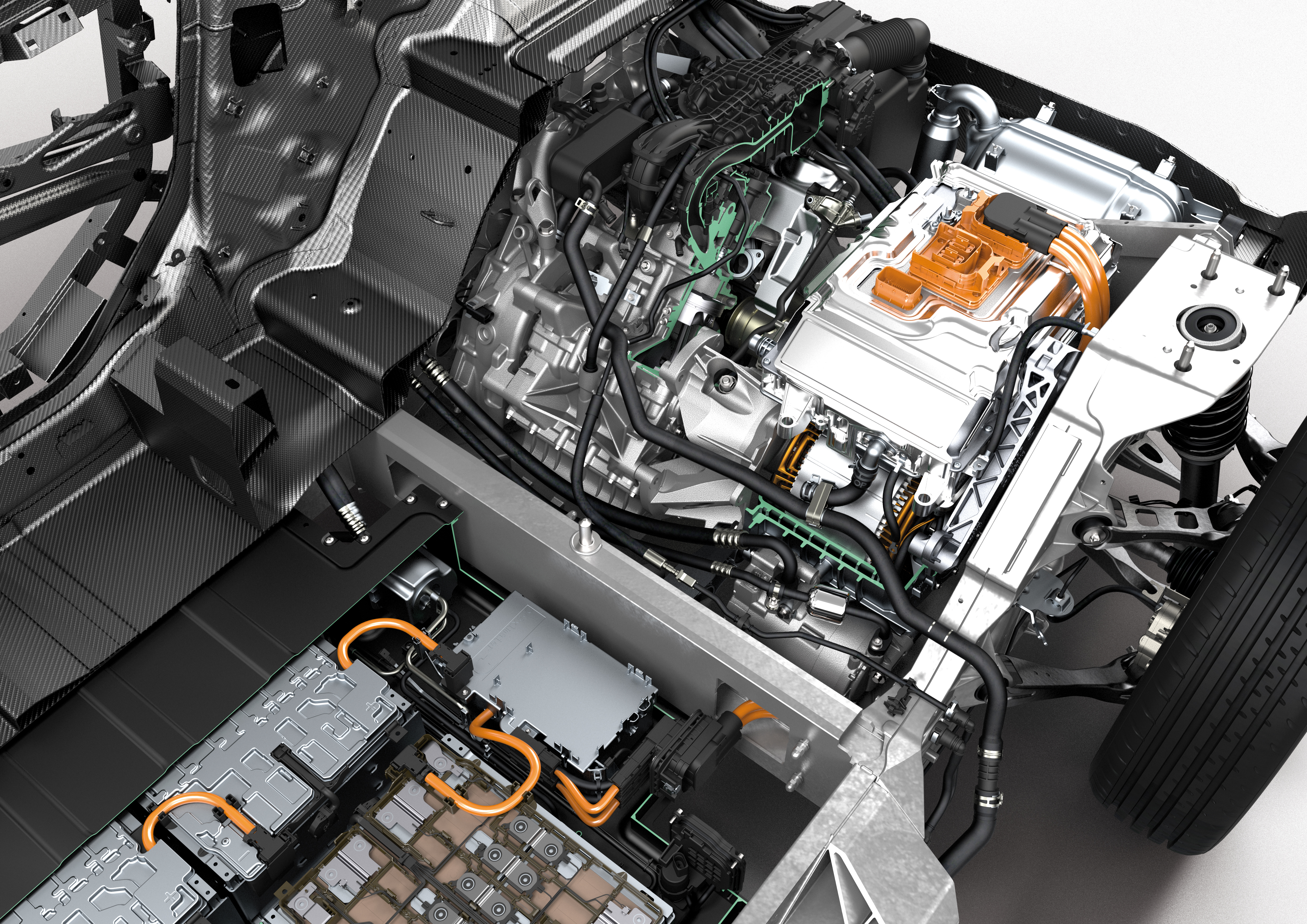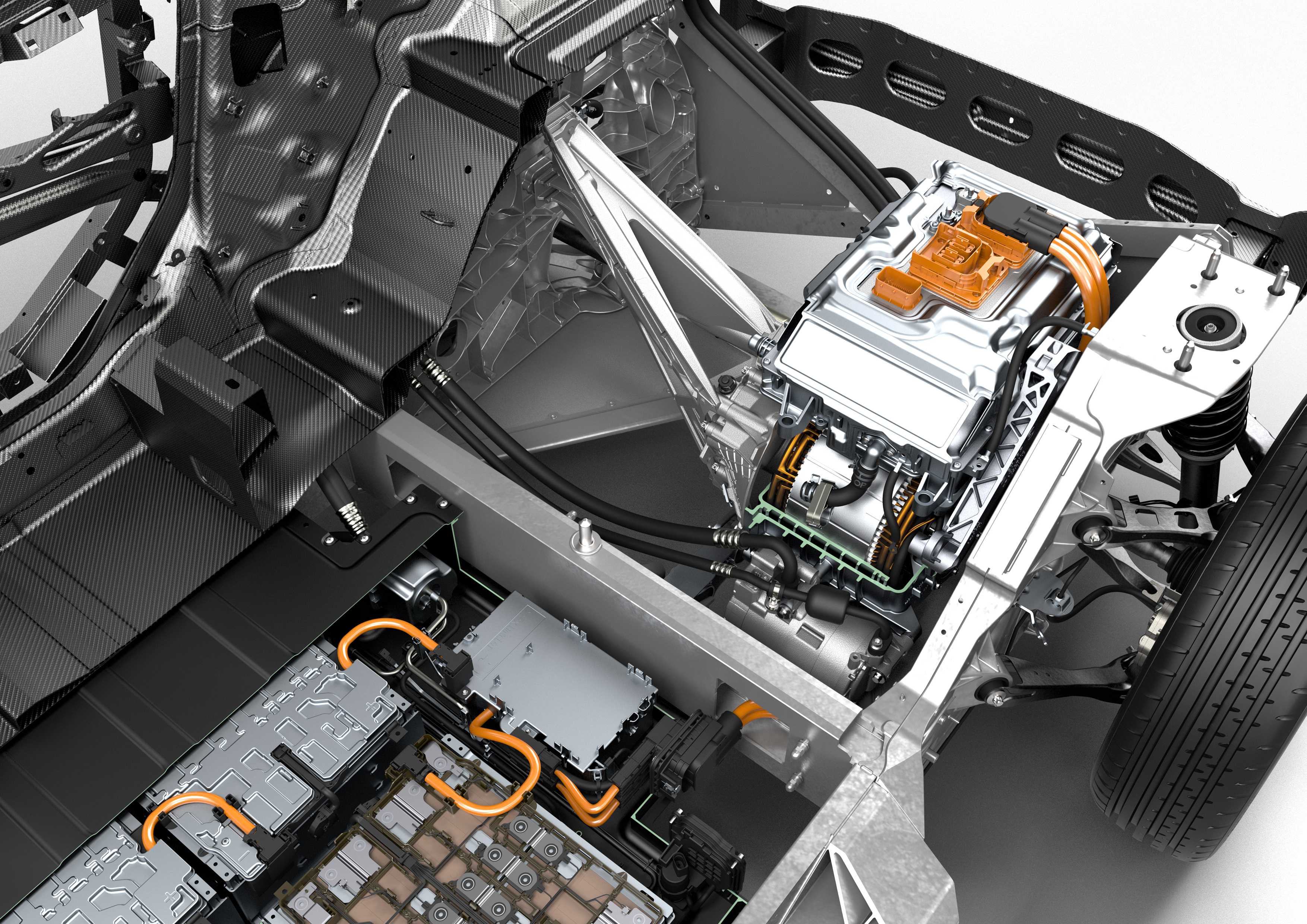Why BMW’s i3 Electric Car is Really a Plug-in Hybrid
In the last few weeks BMW has made a lot of the claim that its new i3, an electric car it will start selling in the fall, is a purpose-built electric vehicle (see “Tesla Versus the Luxury Automakers”) . Unlike the electric cars made by many other automakers, it isn’t just a gas-powered car with the engine and fuel tank swapped for an electric motor and battery back. It’s a new design, with the battery pack and motor kept in mind from the beginning. And engineers went to great lengths to lighten the car to extend its battery range.

But the i3 isn’t really a purpose-built electric car. It’s a purpose-built plug-in hybrid. BMW designed it so that at the back of the car, between the rear wheels, there’s a compartment for a gas-powered generator (originally designed for scooters) which can recharge the battery as you drive. In the battery-only version, that space is wasted. In a purpose built battery-only electric car, it could have been used for more batteries or more space for luggage.
The difference matters because of what it tells us about batteries. With its design choices, BMW is basically saying that battery technology isn’t good enough yet. It doesn’t buy the argument of other automakers (save Tesla) that a range of about 100 miles is enough to attract large numbers of customers. BMW, which expects most customers will by the version of the i3 with a gas generator, is essentially saying the same thing as GM, which builds the gasoline-enhanced Volt, although BMW is using a much smaller engine and gas tank. Customers are going to want more range than batteries alone can affordably provide.
Below the image are the numbers that show what BMW was thinking.

A gas tank about the size of a brief case can nearly double the range of BMW’s i3 from about 145 kilometers (90 miles) to 270 kilometers (168 miles). The gas engine also adds about $3,650 to the price of the car, boosting it, according to reports, from $41,350 to $45,000 in the U.S. Although the engine adds weight and cost, affecting performance, doubling the size of a battery pack would be more expensive and add more weight.
What would the tradeoffs have been of doubling the size of the battery pack to get a similar range? Automakers generally keep quiet about the cost of batteries, but current estimates suggest it would cost about $11,000 to double the size of the i3’s battery pack, far more than the price increase for the gas generator. It would also add another 230 kilograms of weight, nearly twice the weight of the range extender system.
So adding range with batteries would cost more, and it would weigh down the car more, and presumably would affect the performance of the car more.
These calculations will change as batteries come down in price and weight (the two go hand in hand, because cost comes down as battery makers find ways to reduce the amount of material needed). If batteries get cheaper than around $200 per kilowatt hour, extra batteries start to look competitive with the extended-range gas engines—especially if you factor in the offer advantages such as quieter operation and reduced maintenance.
But even at that cost, a challenge remains. One great thing about the range-extender concept is that you can refill the gas tank in a few minutes at ubiquitous gas stations, which has got to be reassuring to drivers. Charging stations exist that can recharge the BMW to 80 percent capacity in half an hour, but they’re uncommon. Tesla Motors has superchargers that are twice as fast, and it has demonstrated battery swap stations that are faster than filling up a gas tank. So we know that it���s technically possible to get an all-electric car back on the road quickly. It will take some time, though, before such charging stations are close to being as readily available as a gas station.
Has BMW hit on a better range-extending concept than GM? The i3 has a much longer battery-only range than the range-extended Chevrolet Volt or the upcoming Cadillac ELR, which travel about 35 miles on a charge, but can go 300 miles more with electricity from the gas generator. The 90-mile battery range of the BMW will allow far more drivers to use batteries alone for commuting, recharging by plugging in at home and possibly never needing to go to the gas station. But the range-extending gas engine doesn’t provide enough range for the i3 to be a general replacement for gas-powered cars. It’s more of a second car, or one for commuting only, not road trips.
It will also be interesting to watch Tesla, which seems to be driving down battery costs faster than others. It’s betting on pure electric vehicles that have a range on a charge close to that of gasoline-powered cars—its Model S can go 265 miles on a charge. Tesla claims it can make a $35,000 car with a range close to that of a Model S within a few years, by which time it plans to have an U.S. wide fast-charging network in place (see “Forget Battery Swapping: Tesla Aims to Charge Electric Cars in Five Minutes”). If its plan succeeds, electric cars with gas range-extenders could prove to be only a short term fix, and we’ll look back on them in a few decades as a historical curiosity.
Deep Dive
Climate change and energy
The problem with plug-in hybrids? Their drivers.
Plug-in hybrids are often sold as a transition to EVs, but new data from Europe shows we’re still underestimating the emissions they produce.
Harvard has halted its long-planned atmospheric geoengineering experiment
The decision follows years of controversy and the departure of one of the program’s key researchers.
Why hydrogen is losing the race to power cleaner cars
Batteries are dominating zero-emissions vehicles, and the fuel has better uses elsewhere.
Decarbonizing production of energy is a quick win
Clean technologies, including carbon management platforms, enable the global energy industry to play a crucial role in the transition to net zero.
Stay connected
Get the latest updates from
MIT Technology Review
Discover special offers, top stories, upcoming events, and more.